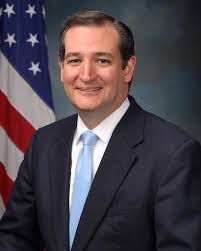 HOUSTON, Texas – U.S. Sens. Ted Cruz (R-Texas) and John Cornyn (R-Texas), along with Reps. Kevin Brady (R-Texas), Brian Babin (R-Texas), and Louie Gohmert (R-Texas), on Thursday sent a letter to the U.S. Forest Service urging the agency to expedite the Draft Environmental Impact Statement (DEIS) review of a proposal to lease large areas in and around the National Forests and Grasslands in Texas (NFGT) for oil and gas development, which is now months overdue.
HOUSTON, Texas – U.S. Sens. Ted Cruz (R-Texas) and John Cornyn (R-Texas), along with Reps. Kevin Brady (R-Texas), Brian Babin (R-Texas), and Louie Gohmert (R-Texas), on Thursday sent a letter to the U.S. Forest Service urging the agency to expedite the Draft Environmental Impact Statement (DEIS) review of a proposal to lease large areas in and around the National Forests and Grasslands in Texas (NFGT) for oil and gas development, which is now months overdue.
In the letter, they wrote:
“Reopening National Forest and Grasslands in Texas to new oil and gas development will provide significant benefits to Texas. The United States Forest Services estimates that the existing and projected wells will produce over 68 million barrels of oil and more than 4 trillion cubic feet of natural gas. This production will directly benefit nearby counties and school districts who receive royalties from oil and gas that is extracted from National Forests and Grasslands in Texas.”
Full text of the letter is here and below.
March 5, 2020
The Honorable Vicki Christiansen
Chief, U.S. Forest Service
U.S. Department of Agriculture
1400 Independence Ave., SW
Washington, DC 20024
Dear Chief Christiansen,
We write today urging the expeditious review of a United States Forest Service (USFS) proposal that would once again allow the Bureau of Land Management (BLM) to make public land in Texas, that’s under Forest Service management, available for oil and gas development.
As you know, during the Obama Administration, USFS withdrew consent to BLM to issue new leases of National Forests and Grasslands in Texas for oil and gas development. This was despite the fact that National Forests and Grasslands in Texas had been made available by USFS for oil and gas development since 1996. USFS has since stated that the justification for reversing this policy was: “insufficient public notification, insufficient opportunity for public involvement, and insufficient environmental analysis.”
It’s worth noting however that during the development of the 1996 Forest Plan, stakeholders had multiple opportunities to provide input. The 1996 Forest Plan was a result of revising the 1987 Forest plan and was crafted after receiving extensive public input, which included over 1,800 comment letters during the draft Environmental Impact Statement (EIS) and final EIS processes.
Therefore, we were encouraged when USFS published a Notice of Intent in the Federal Register on August 27, 2019 announcing it would complete an EIS analyzing the effects of identifying areas to be made available or unavailable for new oil and gas development. The published timeline anticipated a Draft EIS in the winter of 2019 with the Final EIS expected in the fall of 2020. We are concerned that this timeline is no longer achievable given current pace of progress.
Reopening National Forest and Grasslands in Texas to new oil and gas development will provide significant benefits to Texas. USFS estimates that the existing and projected wells will produce over 68 million barrels of oil and more than 4 trillion cubic feet of natural gas. This production will directly benefit nearby counties and school districts who receive royalties from oil and gas that is extracted from National Forests and Grasslands in Texas. Expanding this activity will not only place Texas on the same level of competition with states where oil and gas leasing is permitted in the National Forest System but will add to our nation’s overall energy independence.
We request that USFS end the informal comment period, issue a Draft EIS this spring and ultimately approve the Final EIS that reinstates BLM’s ability to offer public competitive leases of National Forest and Grasslands in Texas for oil and gas leases before the end of 2020. While USFS is required by law to respond to eligible comments received within the public comment window (CFR218.12), the Forest Supervisor also has the authority to declare the available science sound, conclude the public comment period, and proceed with the issuance of the scoping comments and alternative development workshops as the next steps ahead of a Draft EIS (CFR219.2.3, 219.3).
We look forward to working with you during this process and are hopeful that USFS will expedite this review so that we can increase our nation’s energy independence and help improve our local communities in Texas.
Thank you for your attention to this matter.
Sincerely,
/s/

